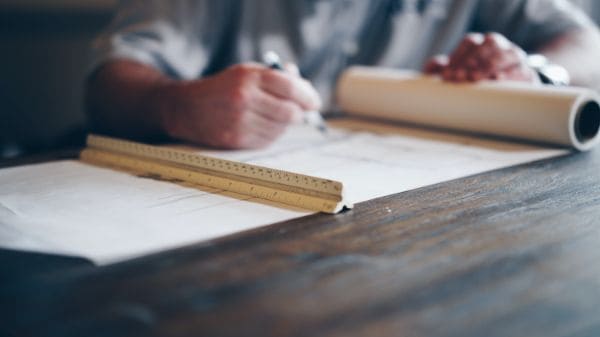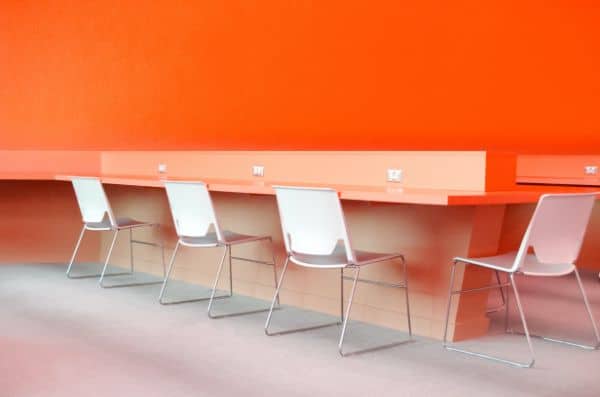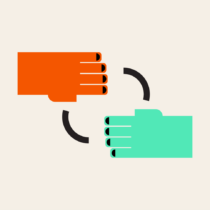Signage series: Part 2 – Four tools to create a consistent and on-brand signage conversion

In the second article of this six-part series on signage conversions during a merger or acquisition (M&A), we dive deeper into understanding the basic tools needed to convert a brand’s signage. If you haven’t yet read the first article in this series, you can view it here: Understanding the steps and tools of managing facility sign conversions during mergers and acquisitions (M&As)
Signs are an organization’s most visible brand asset and should be a primary focus during M&A’s and rebrands. However, sign conversion is also one of the most difficult to implement due to architectural variables, permitting impacts, and overall program costs for the signs themselves. Signage should be well aligned with the program design systems and overall goals of the brand, established during the branding process.
The four primary elements needed to create a consistent and on-brand conversion across the entire facility network are the sign system design, sign system specifications, expanded sign family toolkit, and materials and specs. Below, we will walk through each element.
Sign system design considerations
For businesses undergoing a sign conversion, logo placement is the primary focus of any sign program. There are many contributing factors to consider when designing a branded sign family and selecting materials. The brand architecture and facility identification strategy should also be considered. A few questions to address during this stage are:
- Is the Enterprise brand all that is needed?
- Is there a brand architecture component required?
- Should that brand architecture be displayed as a logo lock-up or used as a standalone element?
- Does the system allow for a geo-locator or some other facility designation?
Designing with these factors in mind will allow for the best opportunity to communicate to the public and allow for appropriate space allocations for all conditions.
A sign system should also follow the overall brand design system and consider:
- Color
- Architectural design
- Design elements
- Illumination
Learn more: The ultimate playbook for navigating M&A rebrands

Color and sign architecture will provide the greatest opportunity for early recognition. Application of these elements should be unique to the industry yet embedded deeply in the brand. The design elements will help position the brand at the facility level: is the sign clean and simple or does it contain more complex design elements? Similarly, two key decisions regarding illumination are deciding between full-face illumination for a stronger nighttime impact OR halo or up-lit faces to express a more elegant display.
It’s important to remember that signage should always reflect the brand rather than specific facility architectural design. It should be its own unique brand asset for broader facility flexibility.
Sign system design: ensure awareness of weather conditions
Signs will be used throughout a variety of locations and climates. Applying the sign system, in theory, to various locations in the facility network will help eliminate costly mistakes and revisits after installation. Some mistakes may not be realized until after the entire program is implemented. Climate can cause problems such as snow accumulation in front of important copy elements or external lighting fixtures. Harsh sun conditions, such as those in southwest regions, may be more susceptible to UV degradation in materials and color life fade of paint and vinyl. Or, structurally, internal sign components that become areas where bugs and water can accumulate should be avoided, especially on fully lit sign faces. Avoiding these types of miscues in the design process will help organizations avoid post-fabrication fixes which add to project cost and ongoing maintenance.
Expanding the sign family via toolkit
With the sign system designed, the next step is expanding the sign family into a more comprehensive toolkit. The sign family should grow to cover most needs identified in the Discovery phase and site surveys (revisit in Part 1). With a broader system, this will help to guide consistent use across facilities in the system today and new facilities over time. Consistency in facility identification and wayfinding is extremely important in building a new brand, as it ensures the comprehensive sign system will benefit the brand and brand experience over time.
A comprehensive sign family is a system that provides multiple sizes and formats of signs required to communicate identification and information on-site in most applications, while anticipating code and permitting requirements. Enhancing the customer experience starts with well-intentioned and consistent facility identification, but becomes more useful and inclusive with site wayfinding, nomenclature, parking ease, and entrance identification. How we communicate and interact at the facility level includes all these components.
Learn more: Enriching environmental experience series – Part one and Part two

Materials and specifications
We have spent quite a bit of time discussing consistency at the facility level. With architectural styles often out of the organization’s control, the best way to drive brand consistency is through signage. Developing technical documentation to guide fabrication and installation is crucial to the brand with slight variations in materials or construction methods potentially having a significant impact on inconsistent brand implementation and usage.
Considerations:
- Match materials/colors: Take the time to select a limited pallet of materials to match brand color under daytime and illuminated nighttime conditions. Sign materials such as vinyls, plastics and paints will all have different physical properties making the matching process all that more important. We never assume that colors match the specifications until we lay eyes on them in varying lighting conditions. It’s critical to the success of a sign system that these materials right.
- Consistent fabrication methods: Fabrication methods are equally important to the process of creating specifications. Consider where seams, fasteners, and hinges are placed so that design elements are always correct and appropriate, maintaining consistency across the portfolio.
- Sustainable materials: When selecting materials and fabrication methods, it is important and responsible to consider efficiencies in materials, common sizes, and sustainable materials and low energy consumption lighting. The best designed programs use these principles to save companies conversion and maintenance costs while having minimal impact on the environment. Planning beyond the materials themselves reduces the carbon impact in fabrication processes and installation efficiencies, such as shipping, equipment idle times and install time.
Learn more: Enabling a consistent brand experience
Design control
The best planned sign system can easily become diluted without the proper controls in place to ensure consistency in materials, fabrication, and overall specification. Creating an accompanying set of mechanical drawings or specification drawings to include materials, finishes, and manufacturing guidelines will direct the manufacturer from the start of the program through its full life. This key tool will also help in obtaining competitive pricing from manufacturers, ensuring that each bidder is providing pricing for the same product and no material or specification substitutions are being made without knowledge of any changes.
A well-designed system creates a strong and consistently branded identification and wayfinding system that effectively enhances the customer facility journey. In addition, executing the appropriate attention at the outset creates efficiencies in the initial implementation and limits the expenses of ongoing maintenance.
Throughout this series, we will share more insight into sign conversions during M&A’s and rebrands. Our next post will look at the system design, specifying products, and managing the recommendation process using SignChart®, our proprietary program management tool.
Please visit our environmental website or contact us directly here to start a conversation. And stay tuned for additional parts to this series on signage conversion.




